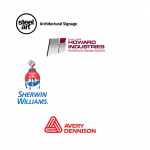Learning from others who have done well with promotional materials their business can be instructive. But, on the flip side, you can also learn from marketing ploys that just don’t cut it. One is a case of imitating what someone else has done right. And the other is a case of steering clearing of what others have done wrong. Save yourself time, money, and sanity by learning from the mistakes of others.
Today we offer some potential don’ts when creating promotional materials—things you may want to avoid as you promote your business. However, don’t forget that, to some degree, these judgments are relative. What may flop for one company, could be successfully carried out by another in some cases.
There aren’t always hard-fast rules. Be sure to deploy your own common sense and be forward-thinking. Keep in mind both your own thorough understanding of what you do as a company and of what your customers expect from you. That said, let’s dive into some scenarios you may want to steer clear of:
1 – To proofread or not to proofread—it’s not even a question
Enter a marketing firm that wants desperately to reach more clients in their local business district. They’ve set aside money in their advertising budget to rent a billboard to bring their message to nearby companies. The slogan?
Were reinventing businesses all over the city.
The problem? Well, if you were looking for a marketing company to help you reinvent your business, you would want it to help create top-tier marketing material, right? And top-quality marketing material shouldn’t have glaring spelling or grammatical errors. Thus, omitting the apostrophe in their first word doesn’t exactly paint a promising picture of the quality of their services.
The bottom line: Don’t forget to check (and maybe double check) your promotional materials.
2 – Not vetting for appropriateness
If you thought that think before you speak was advice that only children have to heed, you were wrong. The idea applies to marketers, too.

Imagine you’re the head of marketing at a medium-sized company in the foodservice industry. As such, you’re one busy manager and you don’t have time to tackle everything yourself. So you delegate promotional material creation to a star new hire who you recruited from halfway across the country. This talented individual comes up with what they think is a perfect slogan for a new product launch.
Turns out, coming from hundreds of miles away is a bit of a liability in this case. Their slogan contains language that has a very different meaning where you live from its meaning in your employee’s home state. At the end of the day, you never noticed it, but the community sure did.
The whole thing blows up and the company trends on social media—but not for a good reason. Innocent mistake? Yes. Innocuous outcome? Not so much.
3 – Cracking bad jokes
A popular hotel needs a billboard along a nearby highway. When he’s not at his hotel day job, the in-house “graphic designer” happens to be a savvy political strategist. He knows a lot about what’s going on in city politics. He designs a billboard that incorporates a joke about a recently contested city statute. It’s funny, and he and a co-worker laugh uproariously at the creation.
Two days later, it appears on three billboards. Some viewers don’t find it funny. Incidentally, neither do the designer’s managers who now have to deal with the community fallout. One way to try to prevent this kind of situation is to vet all promotional materials before they go out. In fact, the company could decide to mandate that multiple members of the company have an opportunity to weigh in before promotional materials are disseminated.
4 – Being vague on important details
Let’s say a local gift shop just came up with a snappy ad that simultaneously promotes their weekend craft festival and their shop as a whole. It’s already making viewers chuckle and smile. And people are definitely interested in checking the place out.
However, there’s one slight problem. The ad doesn’t mention when the fair is, where it is, or even how to get in touch with the company. While interested participants can do some legwork of their own to find out more, the company may have just shot itself in the foot. What if some potential participants decide that looking up more info is just too much work?
5 – Stabbing blindly at promotional materials
A manufacturing company has a “meeting of the minds” for upper management. They decide that the company needs to do more to market itself. So they choose to put more effort and money into promotion.

They elect to use a targeted mailing, a billboard, and a series of in-person visits to potential clients to try to market the company. Six months later, they discuss whether the work has had a positive impact. The chairman asks if they met their goals for the promotional campaign. The room is silent until someone is brave enough to ask “What were our goals?” Uh-oh.
If you don’t know what you’re aiming for, how will you know when and whether you reach it? Undirected promotion might seem great in the heat of enthusiasm, but what you really want is promotion that’s actually effective. And how will you know if it’s effective until you determine what effect you actually want to achieve?
Don’t fail—succeed
Now that we’ve run through some scenarios you should try not to repeat, don’t forget that there is a flip side to this coin. Thus, take some time to learn about what you should and could do. If signs are in your promotional pipeline, check out our Tips And Tricks To Creating The Most Effective Signs For Marketing. Then, head over to 3 Of The Most Creative Signs & Banners In And Around Detroit.




